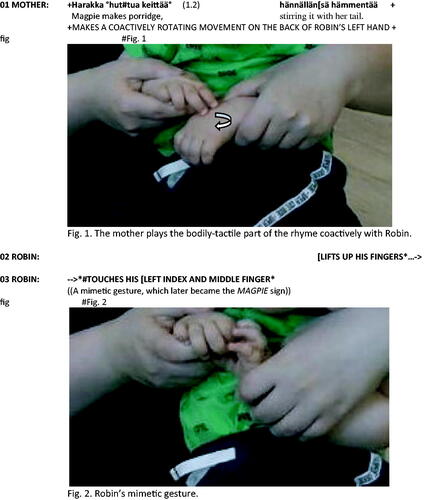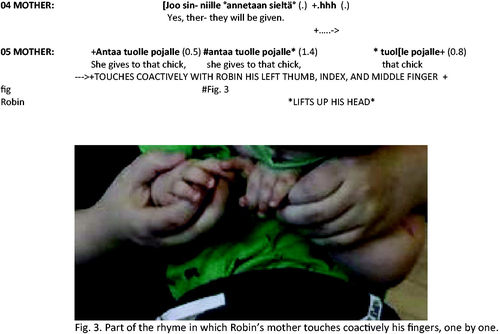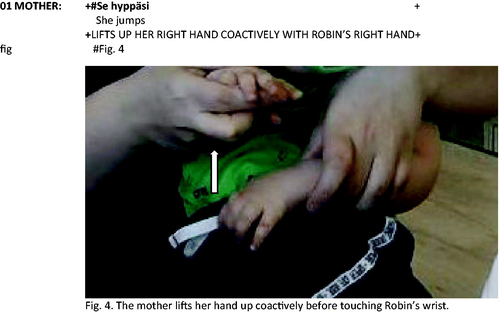Figures & data
Table 1. Summary of the studies exploring the effects of interventions for 0–2-year-olds with VIAD.
Figure 1. Progress of data collection.
Note: The recordings were made weekly during a weekday that was convenient for the family.
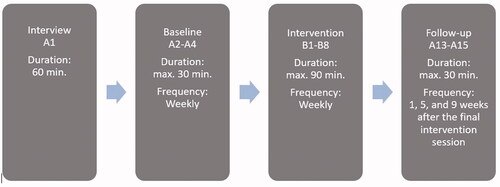
Figure 2. Illustrative Examples of Bodily-Tactile Communication: Coactive Signing, Tactile Contact, Imitation in the Bodily-Tactile Modality, and Tactile Pointing Gesture. Drawings by Saara Koivula.
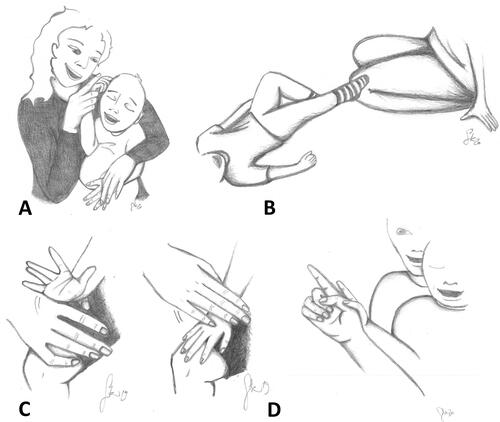
Table 2. The categories of the coding procedures for the mother’s use of bodily-tactile modality in interactions and Robin’s expressions.
Figure 3. The mother’s use of bodily-tactile modality in interactions and touches and movements connected to play as a percentage of time per session.
Note: The total amount of bodily-tactile modality in interactions includes the use of all intervention-based and non-intervention based bodily-tactile forms of communication.

Table 3. Frequencies of the mother’s signs and Robin’s gestural expressions.
Table 4. Robin’s and his mother’s sign vocabulary.
Table 5. Emotional availability between Robin and his mother.
Data availability statement
The data cannot be shared due to ethical restrictions.

